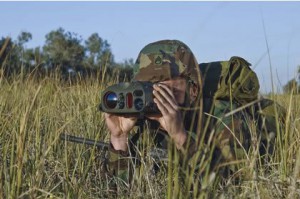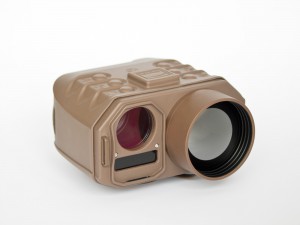Thermal Imaging
All objects have a certain temperature and emit waves of energy called infrared radiation. Hot objects emit more energy than cold objects. A thermal imager translates these energy waves into a viewable image, which shows a “heat picture” of a scene. On the screen of a thermal imager, hotter objects show as white, cooler objects show as black, and objects in between these temperatures are displayed in shades of gray. Because infrared radiation is not blocked by smoke, firefighters can use thermal imagers to see through smoke, enabling them to find victims faster, identify the seat of the fire earlier, and detect structural dangers that could put them at risk.
While the primary advantage of thermal imagers is evident in structure fires, this technology can help at any emergency incident in which normal visibility is reduced.
Size-Up
The thermal imager can give firefighters important information early at an incident during size-up, which can help them develop a better plan for mitigation. At a structure fire, the thermal imager may help identify the location of the fire or the extent of fire involvement prior to firefighters being committed into the structure. At non-fire incidents, thermal imagers can help verify the number of victims at a vehicle collision.
Fire Attack
Just as in size-up, thermal imagers provide information to the fire attack crew that they did not previously have due to poor visibility and building construction. Using this information, firefighters can immediately direct water to the seat of the fire and ensure that their hose streams are working effectively. A thermal imager can also help firefighters locate and isolate hidden fires, such as electrical fires behind walls.
Search and Rescue
Of all the operations in which thermal imaging can improve a firefighter’s efforts, this technology has the most dramatic impact on search and rescue. Without a thermal imager, firefighters search burning buildings by crawling on their hands and knees and groping their way through blinding smoke to find unconscious victims. Recovery rates in these operations are low, since firefighters are forced to rely on physical contact alone to locate victims. Firefighters using thermal imagers can see the scene, which enables them to quickly navigate and identify victims. In addition to allowing firefighters to see through smoke in burning structures, thermal imagers enable first responders to see in the dark to find victims who are lost or in danger. Police departments can also use these devices to search for fugitives.
Ventilation
Firefighters can use thermal imagers to identify areas of heat accumulation, possible ventilation points and significant building construction features. This helps ensure proper and effective ventilation that successfully removes smoke and heat from a building. Ventilation reduces the chances of backdraft or flashover, while possibly giving trapped victims a few more valuable seconds to be found. Identification of superheated gases also helps keep firefighters safer.
Overhaul
After the fire is out, firefighters overhaul a structure to ensure that there are no hidden fires or smoldering materials that could cause the fire to reignite. When using a thermal imager for overhaul, firefighters methodically scan each room for remaining hot spots. When firefighters find these hot spots quickly and efficiently, they minimize the risk of a rekindle, and they reduce property damage. Structural components can be identified easily with a thermal imager, helping firefighters remain safe while fighting fires in compromised structures.
Hazardous Materials
Thermal imaging helps fire officials manage hazardous spills and other hazmat incidents more effectively. Firefighters can use thermal imagers to identify sources and movement of contaminants in bodies of water and on the ground. With the aid of the technology, firefighters can also determine product levels in sealed or pressurized containers.
This article comes from bullard edit released



